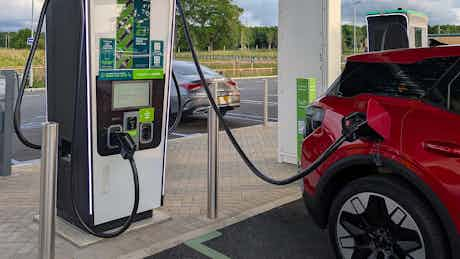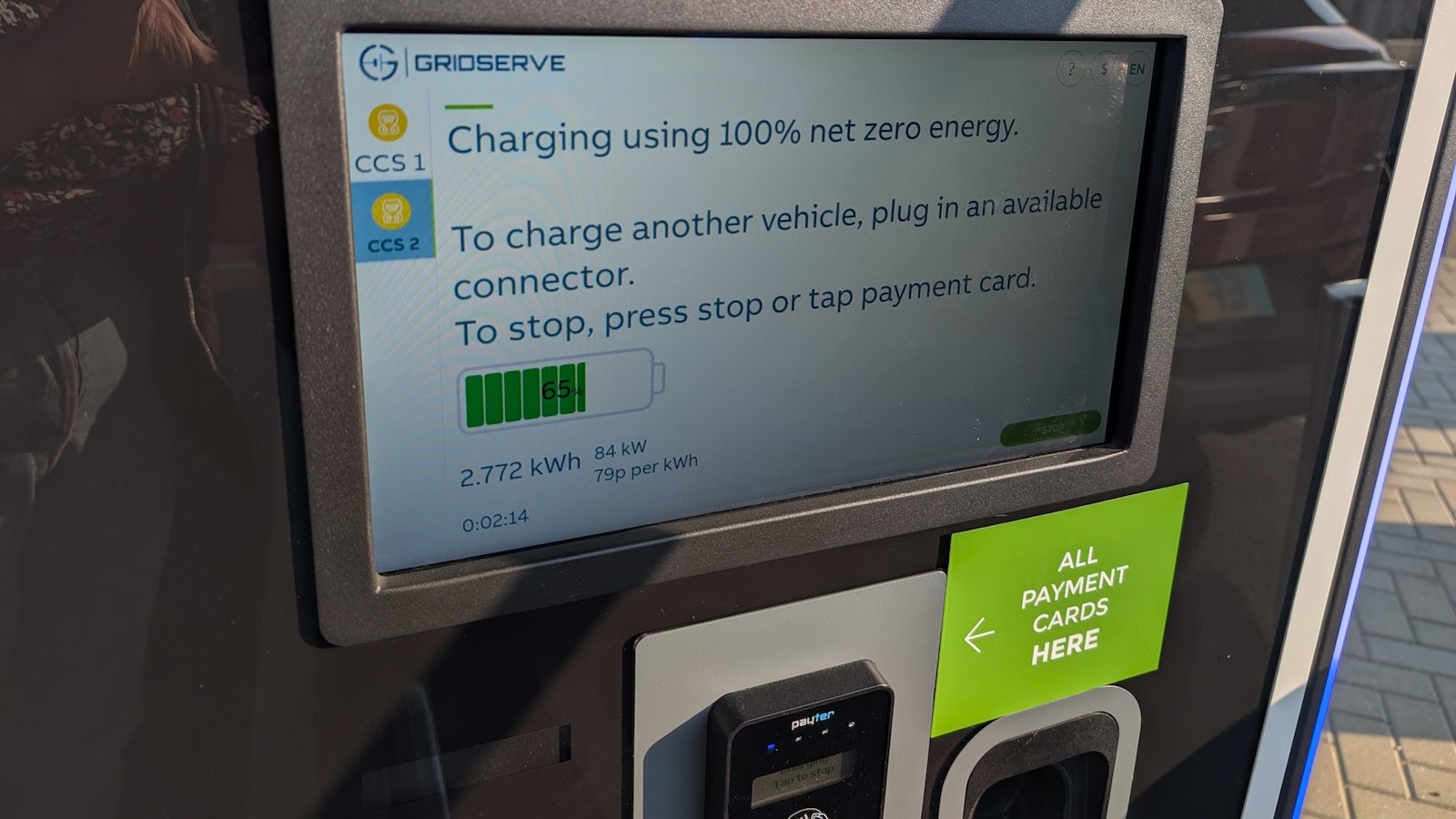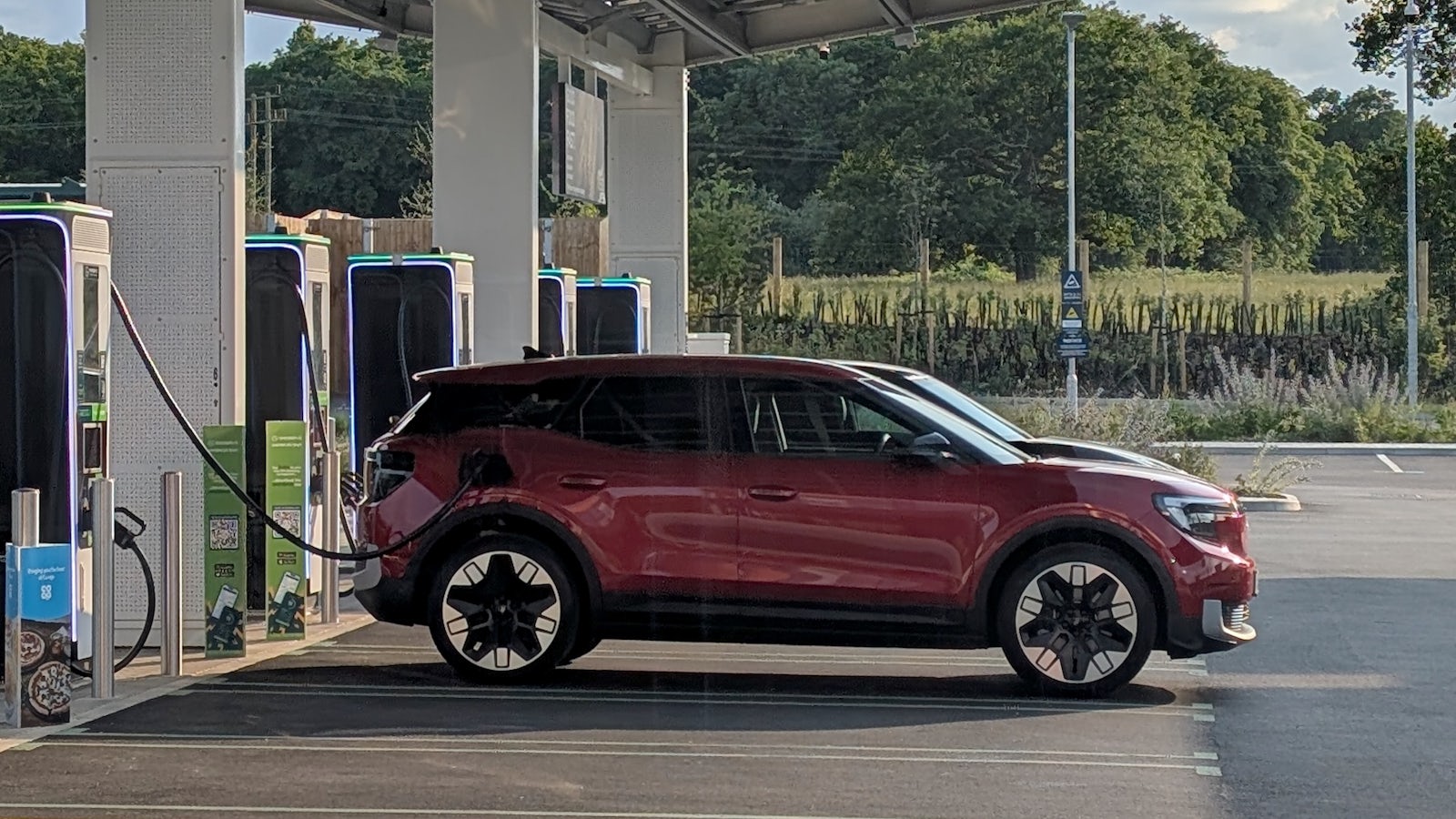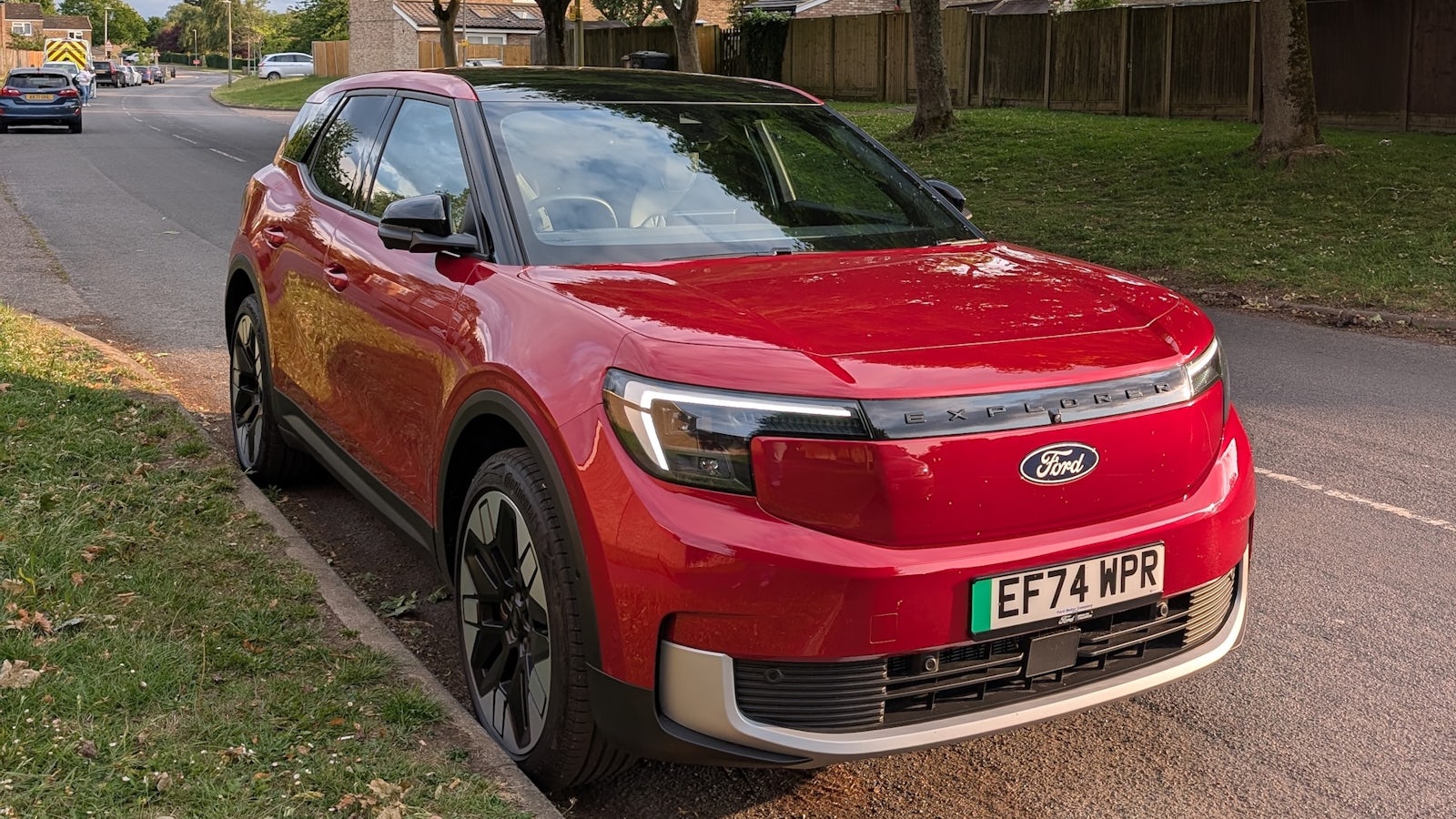Electric car charging: what every EV rookie needs to know
July 16, 2025 by Siobhan Doyle

Charging an electric car for the first time? It can feel a bit daunting. Consumer writer and EV rookie Siobhan Doyle shares her experience – plus some tips to make it easier.
Charging an electric car for the first time can feel like stepping into uncharted territory. Trust me, I’ve been there. When my first electric car was delivered, the keys were handed over, and suddenly, I was on my own.
Driving an electric car is a doddle. Charging, however, is a different story, especially when you don’t know what the hell you’re doing.
As a rookie EV driver, I discovered a cocktail of convenience, brief confusion, and a few unexpected lessons every new owner should know. With more and more electric cars on UK roads and charging stations popping up everywhere, understanding public charging is essential for us newbies.
We’ve also put together a comprehensive guide on electric car charging.
Remember, you can buy a brand new or used car right here on Carwow. And you can also sell your car, too. We’re here to help you through every step of your car-changing journey.
Human interaction goes a long way
I’m quite lucky to live about five minutes away from a Gridserve electric forecourt, which is exactly where I charged my first ever electric car: a Ford Explorer. When pulling up into the Gridserve, I was greeted by a man who asked if I needed assistance.
Though this was a sign that the experience wasn’t going to be as stressful as I thought it would be, it got me thinking: do all public charging stations have this type of service?
Public EV chargers are generally unattended, and perhaps not ideal for someone charging up an electric car for the first time without any prior knowledge. Gridserve – who opened the first dedicated EV charging forecourt in the UK in 2020 – is currently the only company that has people on-site who can help you with your first charge. So if you happen to have Gridserve chargers nearby, they would be your best bet.
And yes, there are other electric charging stations available: BP Pulse and Shell Recharge to name a couple. They are designed for self-service operation, with the BP pulse app and Shell Recharge app giving you the necessary information and control for charging. So, it’s unlikely that you’ll come across a human to help you with your first charge at these places.
Some charging stations are handily located near petrol stations. If you run into any trouble, the staff inside should be able to lend a hand. Just remember to stay patient, calm, and use any support that’s there for you. More experienced electric car drivers in the Carwow team also assured me that often other EV drivers who might also be using the chargers are generally happy to help if you’re struggling.

A crash course in EV charging jargon
As I said earlier, when I was given the Explorer, I was left to my own devices, with barely any clue about the car’s technical side. Most of it was scrolling through the online manual, with Google being a great ally in my time of need. One thing became clear fast: if you’re driving electric, it helps to understand the charging jargon – especially the different types of chargers.
While my experience at a Gridserve was smooth, others… not so much. I wasn’t ready for the tangle of cables, plugs, apps, and confusing screens. CCS or CHAdeMO? What even is CHAdeMO? And why did one charger say 150kW and another just 7kW? What was meant to be a quick coffee break turned into an EV crash course.

Here’s what I’ve learned since: not all chargers are created equal.
Type 2 chargers are your everyday ones: great for long stays at shopping centres, gyms, or at home. Slower (typically 7kW to 22kW), but perfect if you’re not in a rush.
Then there are DC fast chargers – ideal for road trips or topping up quickly. These range from 50kW to over 350kW and can get you back on the road in no time. (Though be aware, just because you plug into a super-fast charger doesn’t mean your car is capable of receiving the full rate!)This is where the jargon gets real. Kilowatts (kW) tells you how fast the charger works. CCS is the standard plug most electric cars use now, while CHAdeMO is an older type still kicking around. Standing in front of all this for the first time, I was definitely out of my depth.
Looking back, it wasn’t a disaster but rather a wake-up call. If you’re new to electric cars, take a bit of time to learn the lingo. It’ll save you some confusion – and maybe a few blank stares – when it’s time to plug in.
We have a handy guide that gives you a rundown of all the electric car connector types that you may come across.
I’ve noticed there’s one too many apps
Once I’d got my head around CCS plugs and charging speeds, I ran into another hurdle: all the different charging networks and the apps, cards, and accounts they come with.
In the UK, there’s a mix: Gridserve, Shell Recharge, BP Pulse, IONITY, Instavolt, Osprey… the list goes on. Some focus on rapid charging at service stations, others turn up in supermarket car parks. Tesla’s Superchargers are now partly open to non-Teslas too, as long as your car uses CCS.

Fortunately, my first charging experience was a doddle. It gave me the option to pay either contactless or download the app, and I went with contactless. The setup was great – fast, easy, and the chargers just worked. It was refreshing to use a service that didn’t require a login just to get started.
That said, most networks still want you to sign up, meaning a pile of apps, login details, payment setups, and sometimes even waiting for a physical card. Before long, your phone starts feeling more like a charging admin tool than a driving companion.
The good news? Any charger over 50kW is now required to offer contactless payment, so you shouldn’t get caught out. Still, many providers offer slightly better rates through their apps, which is why they encourage you to download them. It’s worth having a few set up in advance – not just for the savings, but for checking availability or starting a session remotely.
The infrastructure is growing fast, and things are improving. But for now, it pays to be prepared: download the key apps, set up your accounts ahead of time, and always have a backup plan in case your chosen charger isn’t playing ball.
Planning is your best friend
Driving an electric car is great, but figuring out where to charge can be a bit confusing at first. Unlike petrol stations, charging points aren’t always easy to find or evenly spread out. That’s where a good app really helps.
I’ve found Zapmap pretty useful. It shows you where chargers are, how fast they charge, what they cost, and whether you need to bring your own cable. It made planning my routes a lot easier when I was just getting started.

Some electric cars, such as those from Tesla and Peugeot, have charger locations integrated into their sat navs. This means you can put your destination into the car and it will plan your route with efficient charge stops to get you to your destination, even telling you how much charge to put in.
One thing I’d recommend is knowing where backup chargers are before your battery gets low. Running out of charge without a plan can mean long waits or stressful detours. Having a few options in mind can save you time and hassle.
Using an app such as Zapmap to plan ahead can make trips a lot smoother and take away some of the stress around charging.
There are also other apps similar such as PlugShare, ChargePoint, and Pod Point, to name a few. In fact, Carwow has its own EV charging stations map you can use to look for where to charge your car.
Proper EV charging etiquette
I was lucky that my first charging experience happened during a non-peak time, so it wasn’t very busy. Since then, here are some dos and don’ts I’ve learned about charging:
Dos
- Plan your charging outside of peak times (weekdays between 8–11am and 4–10pm) when possible to avoid busy stations.
- Move your car promptly once it’s charged to free up the spot for others.
- Use apps such as Zapmap to check charger availability before you arrive.
- Choose a less busy charger if you need a longer charge or stop.
- Be patient and polite. After all, everyone’s trying to get where they need to go.
Don’ts
- Don’t charge beyond 80% at public chargers as it slows right down after this and takes its sweet time to do the last 20%!
- Don’t hog a charger once your car is at least up to 80% charge, especially during busy periods.
- Don’t leave your EV unattended for longer than necessary at a fast charger.
- Don’t assume all chargers are the same: check what type of plug and speed your car needs.
- Don’t block chargers with ICE (internal combustion engine) cars or non-charging vehicles.
- Don’t forget to bring your charging cable if the station doesn’t provide one.
It’s a learning curve that’s actually pretty smooth
Charging an electric car felt a little daunting at first, and there were definitely moments when I wasn’t sure I was doing it right. But it’s really just a learning curve. Once it clicks, it starts to feel pretty natural. Filling up at a petrol station in under five minutes is second nature to most of us – but if more of us are making the switch, it’s just about getting used to a new routine.
The benefits are clear: lower running costs, a quieter drive, and the environmental bonus. Even in the short time I’ve been driving electric, I’ve started spotting charging points more easily as more of them pop up.
There’s still room for improvement, of course. The government, carmakers, and charging networks all have a role to play in making the experience smoother and less stressful. Carwow has even put together a ‘Future of Motoring Manifesto’ that outlines what the government could do to help make the switch to electric easier.
For anyone new to electric cars like me, sharing tips and experiences seems like the best way to get through those early days. And honestly? Once it clicks, it’s pretty great.
Car change? Carwow!
Looking for a new set of wheels? With Carwow you can sell your car quickly and for a fair price – as well as find great offers on your next one. Whether you’re looking to buy a car brand new, are after something used or you want to explore car leasing options, Carwow is your one stop shop for new car deals.
Click here to follow us on WhatsApp, where you can keep up-to-date with all the latest news, reviews, advice guides and videos.















